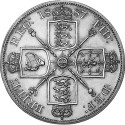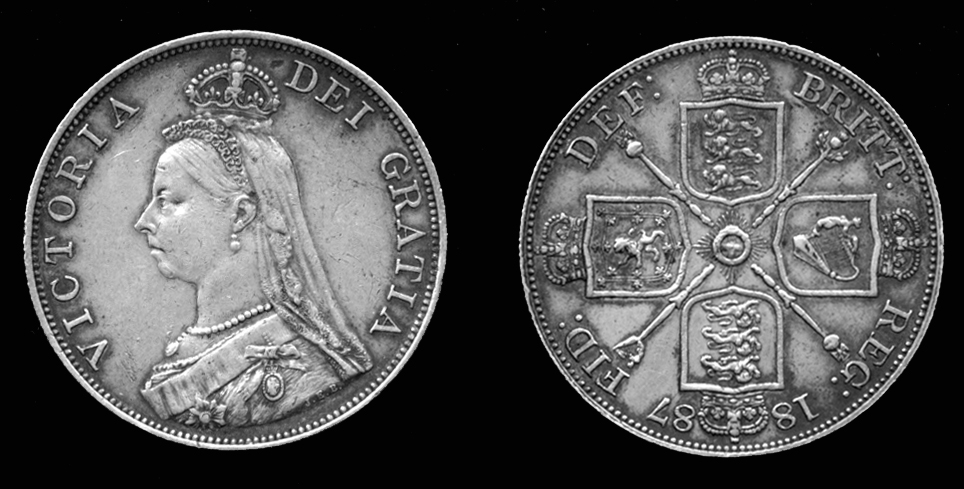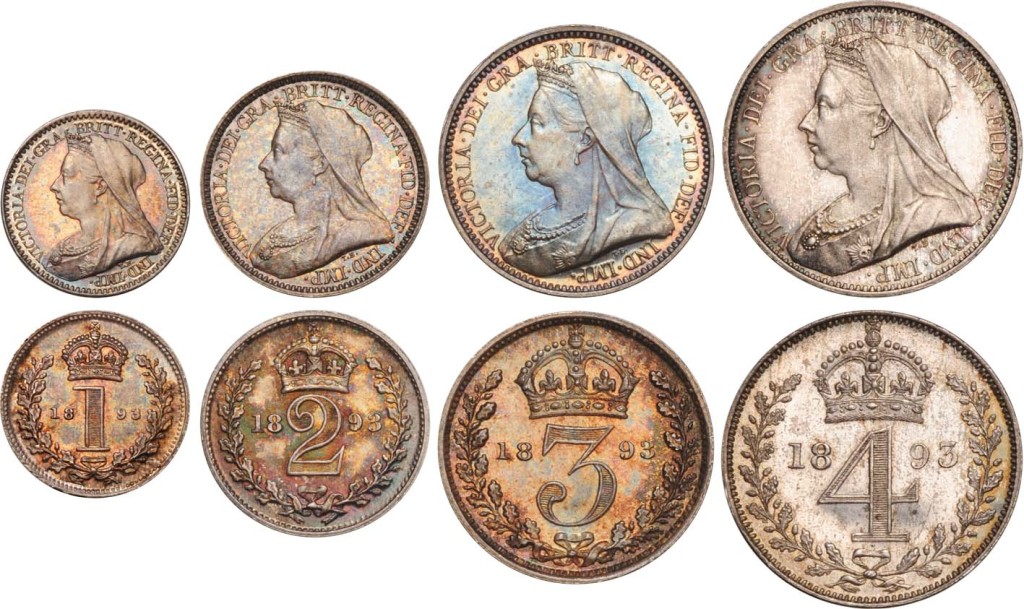A Scion Society of The Baker Street Irregulars

Even More on the Matter of Money
“You shall not have a farthing from me …”
– The Adventure of The Beryl Coronet (BERY)
I have been following the various contributions on British coinage in your recent issues and felt that you would, perhaps, find the following useful:
The 1/8 of a penny copper coin referred to by Len Haffenden is probably being confused with the “groat”, which in fact, was silver. Far from being discontinued “around the time Queen Victoria was born”, its last minting was in 1837 when Victoria, by then a handsome young lady of 18, came to the throne in succession to William IV. “Groats” were issued in Victoria’s reign but, by then, the value had risen to 4d (four pence), although the content of the coin remained silver.
“Half-farthings” (previously only minted for use in Ceylon and Malta) were also issued during Victoria’s reign. Catalogues record the issue of this coin between 1839-1856. In addition a “third-farthing” (for use in Malta) was minted between 1844-1885 and a “quarter-farthing” (for use in Ceylon) was minted in various years between 1839-1853.

In addition to the “Florin” (two shillings), a “double florin” (four shillings) was minted in the year etched on all our memories, 1887. Minting of this coin continued until 1890. The “Florin” is worthy of additional mention as it was Britain’s first step towards conversion to the decimal system. When the coin, equivalent to 1/10th of a pound, was introduced in 1849, the coins omitted the words Dei Gratia (By the Grace of God) which usually appeared as part of the legend. As a result, the issue became known as the “Godless Florin”. This was eventually replaced by the “Gothic” issue of 1851. Holmes’s reference to a “bad florin” in “The Crooked Man” seems, however, more likely to be a case of a forged coin than a “Godless florin”.
The pronunciation of “threepence” as “thruh-pence” would seem to be more a case of regional dialect and/or affectation of speech similar to that which today manages to bastardize “Coventry” to “Cuventry”, We may, perhaps, blame “BBC English” for some of the strange pronunciations foisted upon us. Certainly in the Midlands of England, and probably in the North, too, “threpence” or “threp’ny bit” would be the more common pronunciation.
The “half-crown” was temporarily discontinued following the introduction of the “florin”, but only for a short time. John Hall, referring to the “crown” (Spring/Summer 1994 issue) may well be correct in stating that five shillings was never referred to as a “crown”. However, five shillings was generally the accepted face value of that coin-with one or two exceptions. Recent issues of the coin, in the reign of Elizabeth II, have moved away from that value. The 1990 and 1993 “crown”, for example, have a face value of five pounds. But it is also worth noting that the “crowns” issued in 1977, 1980, and 1981 were, in fact, known as “twenty-five pence pieces” (the decimalised equivalent of five shillings).
Mr. Haffenden is, of course, mistaken if he advised you that the five shilling coin was known as a “half-sovereign”. “Half sovereigns” were equivalent to ten shillings, in the same way that a “Sovereign” was equivalent to one pound. Being a gold coin, the value far exceeds either ten shillings (fifty pence) or a pound. A current issue “Sovereign” (1994) would cost in the region of £75. Needless to say, the coin is not in general circulation.

Whilst not in general usage, the Maundy Money distributed by the Sovereign every Maundy Thursday from 1660 onwards, provides us with “fourpence”, “threepence”, “twopence” and “penny” coins.
Sherlock Holmes may have been familiar with other coins, too. In Victoria’s reign (1837 – 1901) a gold five pound coin was issued in 1887 as was a gold two pound coin. Similar denominations were also issued in 1893.
One coin I have not seen mentioned in your pages is the silver “threepence”, which appears to have been popular until its last minting in 1946. The silver “threepence” should not be confused with Mr. Haffenden’s “multi-sided coin, not copper and not silver, sort of greeny yellowy thing”, which Rolls Royce salesmen used to place on the bonnets of the cars to demonstrate smooth running. The latter coin was, to give it its numismatic terminology, dodecagonal (twelve-sided) The coin was made of nickel-brass and continued to be minted until 1967.
And Mr. Haffenden is a little unfair in describing modern British coinage as “comparatively dull”.* Like most modern coinage it is utilitarian but I wonder whether he knows, for example, that each of the countries of the Union has its own one pound coin, each bearing a distinctive design? And he has perhaps not seen the magnificent gold sovereigns, half-sovereigns, £100 pieces, £50 pieces, £25 pieces, £10 pieces, and £2 pieces minted in recent years.
Perhaps the most notable “everyday” coin to be issued recently was the fifty pence which commemorated the 50th anniversary of the Normandy Landings on D-Day. Not, admittedly, a coin in general circulation – but hardly comparatively dull.
(*Perhaps it is our “colonial” orientation, but we agree with Mr. Haffenden’s analysis of “comparatively dull.” everything in the new system is so tiresomely regular; in the “old days” it required some skill to keep track of everything!!)
This post was originally published in the The Sherlockian Times and was later reprinted in The Formidable Scrap-Book of Baker Street, edited by Carolyn & Joel Senter.
